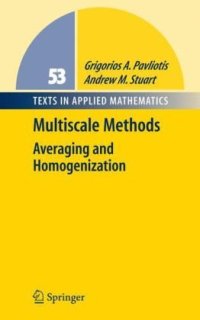
Ebook: Multiscale Methods: Averaging and Homogenization
- Genre: Mathematics // Differential Equations
- Tags: Partial Differential Equations, Probability Theory and Stochastic Processes, Appl.Mathematics/Computational Methods of Engineering, Mathematical Methods in Physics, Computational Science and Engineering
- Series: Texts Applied in Mathematics 53
- Year: 2008
- Publisher: Springer-Verlag New York
- Edition: 1
- Language: English
- pdf
This introduction to multiscale methods gives readers a broad overview of the many uses and applications of the methods. The book begins by setting the theoretical foundations of the subject area, and moves on to develop a unified approach to the simplification of a wide range of problems which possess multiple scales, via perturbation expansions; differential equations and stochastic processes are studied in one unified framework. The book concludes with an overview of a range of theoretical tools used to justify the simplified models derived via the perturbation expansions.
The presentation of the material is particularly suited to the range of mathematicians, scientists and engineers who want to exploit multiscale methods in applications. Extensive use of examples shows how to apply multiscale methods to solving a variety of problems. Exercises then enable readers to build their own skills and put them into practice.
Extensions and generalizations of the results presented in the book, as well as references to the literature, are provided in the Discussion and Bibliography section at the end of each chapter. All of the twenty-one chapters are supplemented with exercises.
Grigorios Pavliotis is a Lecturer of Mathematics at Imperial College London.
Andrew Stuart is a Professor of Mathematics at Warwick University.
The book is meant to be an introduction, aimed primarily towards graduate students. Part I of the book (theoretical foundations) and Part III of the book (proving theorems concerning simplified versions of the models that are studied in Part II) are necessarily terse and present the wide range of applications of the ideas, and illustrate their unity.
The subject matter in these set of notes has, for the most part, been known for several decades. However, the particular presentation of the material here is particularly suited to the pedagogical goal of communicating the subject area to the wide range of mathematicians, scientists and engineers who are currently engaged in the use of these tools to tackle the enormous range of applications that require them.
Extensions and generalizations of the results presented in these notes, as well as references to the literature, are given in the Discussion and Bibliography section, at the end of each chapter.
With the exception of Chapter One, all chapters are supplemented with exercises.